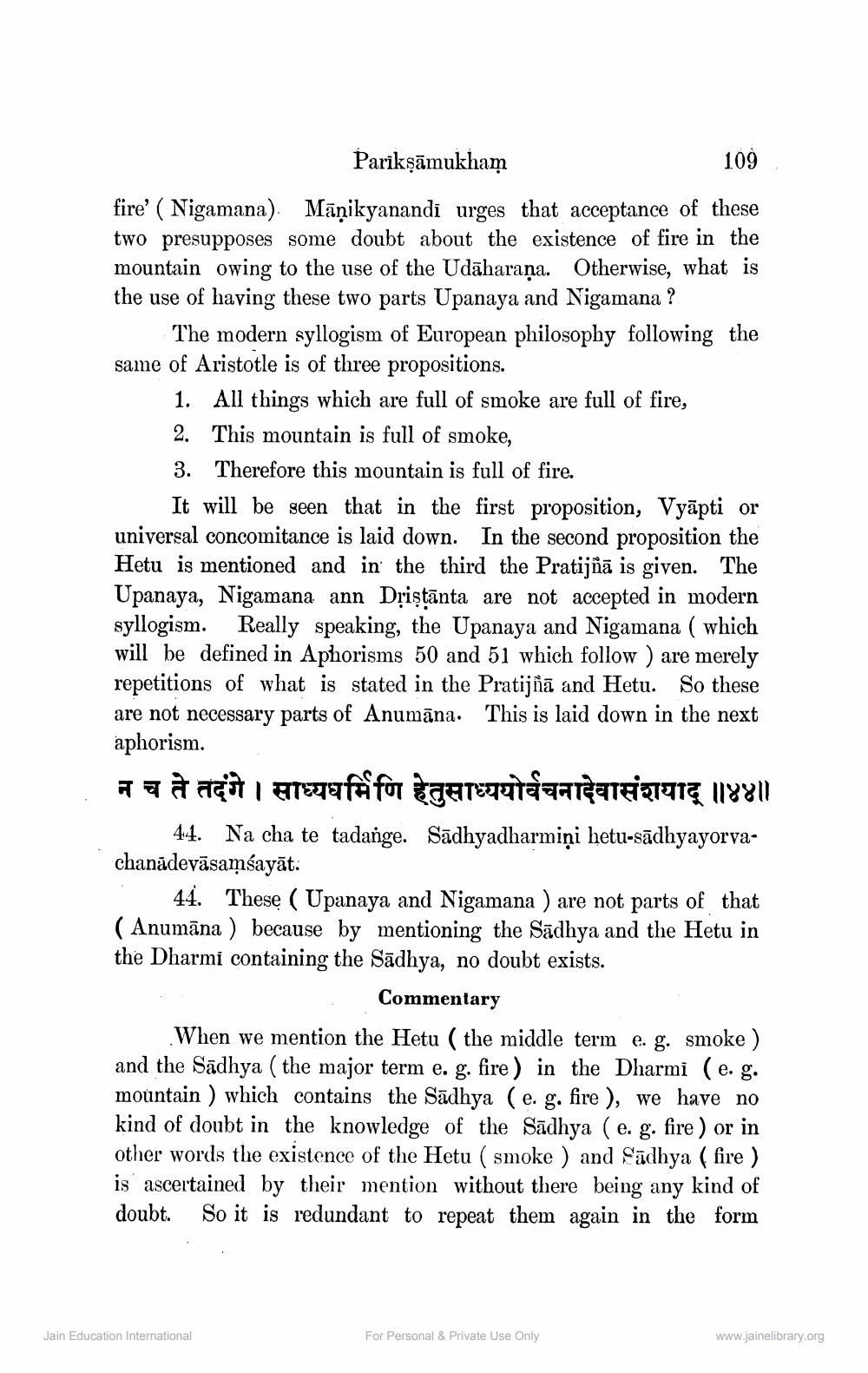________________
Parikşāmukham
109 fire' ( Nigamana). Māņikyanandi urges that acceptance of these two presupposes some doubt about the existence of fire in the mountain owing to the use of the Udāharaṇa. Otherwise, what is the use of having these two parts Upanaya and Nigamana ?
The modern syllogism of European philosophy following the same of Aristotle is of three propositions.
1. All things which are full of smoke are full of fire, 2. This mountain is full of smoke, 3. Therefore this mountain is full of fire.
It will be seen that in the first proposition, Vyāpti or universal concomitance is laid down. In the second proposition the Hetu is mentioned and in the third the Pratijñā is given. The Upanaya, Nigamana ann Dristānta are not accepted in modern syllogism. Really speaking, the Upanaya and Nigamana ( which will be defined in Aphorisms 50 and 51 which follow) are merely repetitions of what is stated in the Pratijñā and Hetu. So these are not necessary parts of Anumāna. This is laid down in the next aphorism. न च ते तदंगे। साध्यधर्मिणि हेतुसाध्ययोर्वचनादेवासंशयाद् ॥४४॥
44. Na cha te tadange. Sādhyadharmiņi hetu-sādhyayorvachanādevāsaņśayāt.
44. These ( Upanaya and Nigamana ) are not parts of that ( Anumāna ) because by mentioning the Sādhya and the Hetu in the Dharmi containing the Sādhya, no doubt exists.
Commentary When we mention the Hetu ( the middle term e. g. smoke ) and the Sadhya ( the major term e. g. fire) in the Dharmi (e. g. mountain ) which contains the Sādhya (e. g. fire ), we have no kind of doubt in the knowledge of the Sādhya (e. g. fire ) or in other words the existence of the Hetu ( smoke ) and Sadhya (fire) is ascertained by their mention without there being any kind of doubt. So it is redundant to repeat them again in the form
Jain Education International
For Personal & Private Use Only
www.jainelibrary.org




